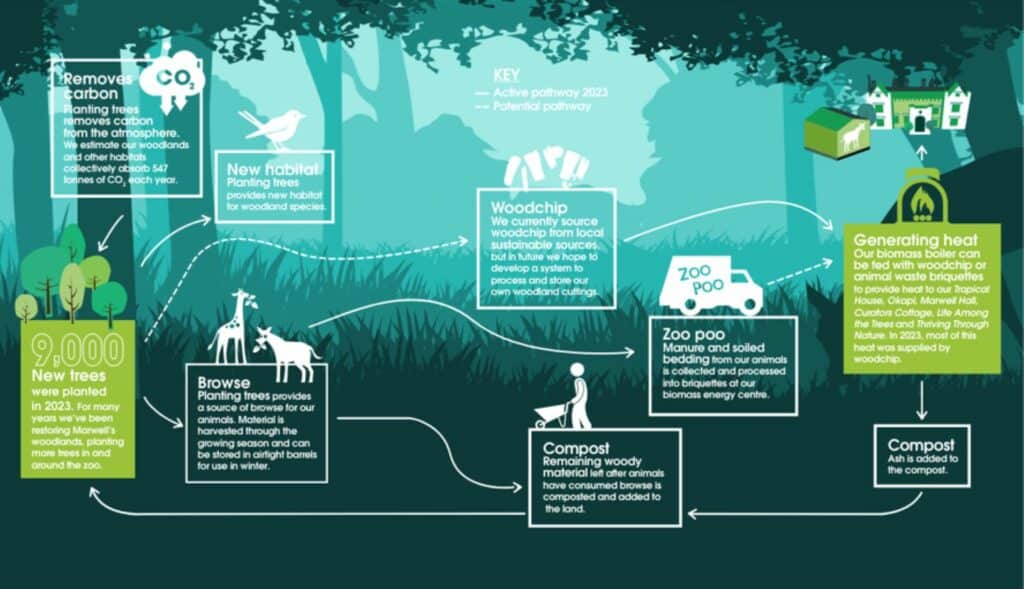Restoring woodlands and planting trees for sustainability success
July 9, 2024
July 9, 2024

For many years we have been restoring the woodlands at Marwell and planting additional trees both within the zoo and on our surrounding land. In 2023, we planted 9,000 new trees. Tree planting provides a source of browse (young leafy stalks of high nutritional value) to feed our animals, whilst also helping to remove carbon from the atmosphere.

Many of the herbivores living at Marwell Zoo would get most of their food by eating leaves from trees and bushes in their natural habitat. The nutritional content can be achieved by feeding pre-prepared feeds from specialist suppliers, but Marwell tries to encourage natural feeding behaviour and nutrition by including leafy material as much as possible. To meet this need for fresh leafy material Marwell teams cut young branches from trees and hedges within the zoo, from our woodland and from woodland on our neighbours’ land and land managed by the Hampshire and Isle of Wight Wildlife Trust.
During the main growing season, from May until September, the team at Marwell harvest two trailer loads of browse per day, approximately 1 – 1 ½ tonnes of branches. In late summer and into the autumn the team switch to collecting browse that can be stored in barrels for feeding through the winter months. This labour-intensive process involves collecting branches and hedge trimmings in a central location and stripping the leaves off the branches to be stored in air-tight barrels. By excluding air from the barrels, the leaves are kept fresh for feeding throughout the winter until new growth starts in the spring. In 2023, we filled 218 barrels with the help of various corporate engagement teams and the Hampshire and Isle of Wight Wildlife Trust. The giraffe Giraffa camelopardalis, our largest browsing animal, eat around three quarters of this food, followed by the okapi Okapia johnstoni and smaller amounts for the pygmy hippos Choeropsis liberiensisat and the primates.


In recent years we have planted 3.5 hectares (equivalent to 8 acres) of fast growing native woodland species which are easily harvested to provide browse for our animals. Planting more trees and enhancing management of our existing woodlands, prepares the way to further self-sufficiency in browse production in the future. Plus, it creates new habitats for wildlife in our woodland areas.
Meanwhile, as part of Marwell’s broader sustainability efforts, manure and soiled bedding from our animals is collected and processed into briquettes to heat our largest buildings using biomass technology (read more about our innovative Zoo Poo initiative here).

Having met our target to make operations at Marwell Zoo carbon positive by the end of 2022, we were delighted to achieve this feat again in 2023.
Our 2023 carbon footprint was 412 tonnes CO2e (almost 100 tonnes less than 2022). With carbon absorbed by our woodland, fields and paddocks estimated at 547 tonnes per year, this meant we again absorbed more carbon from the atmosphere than we emitted from the zoo operations.